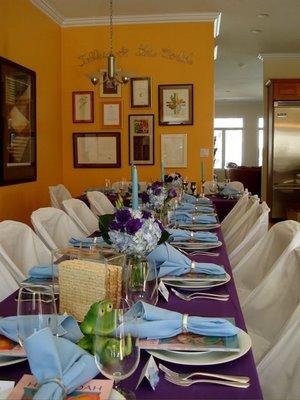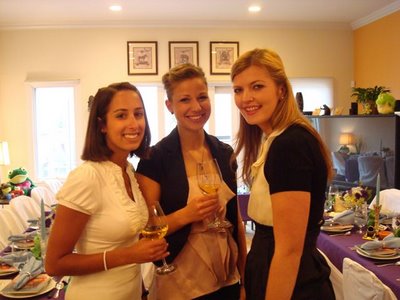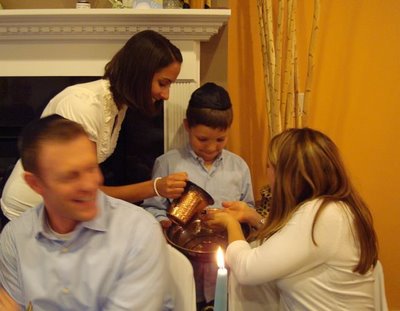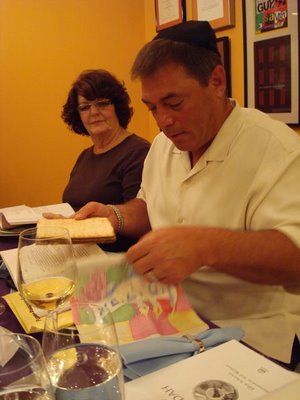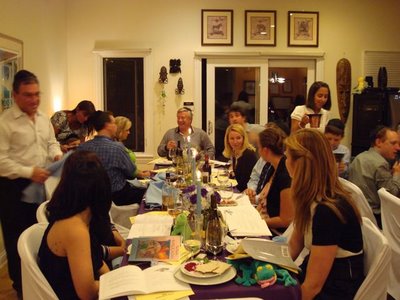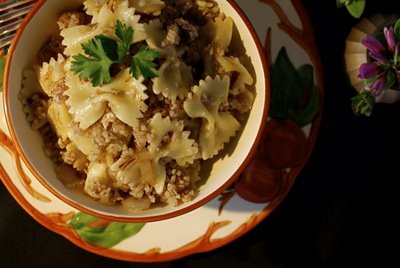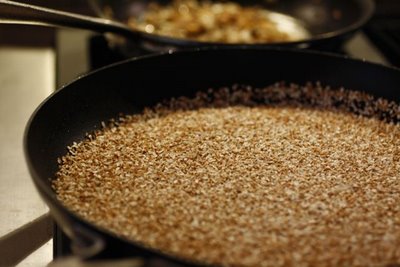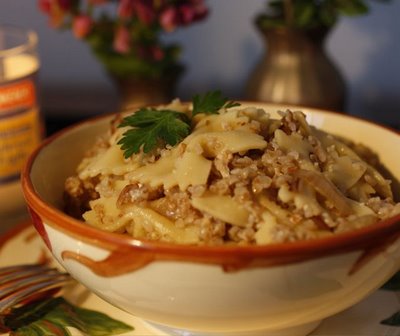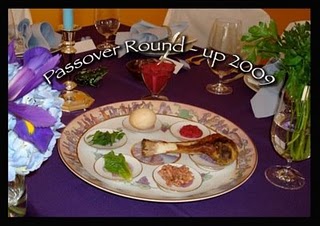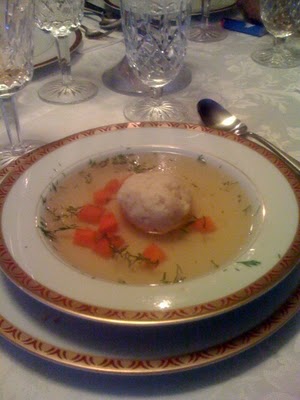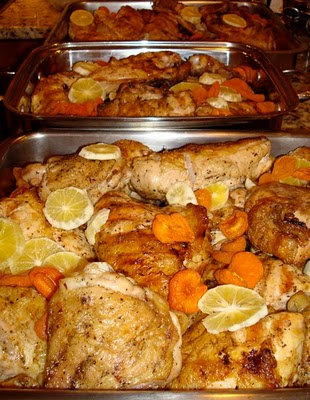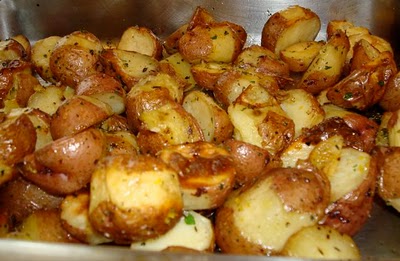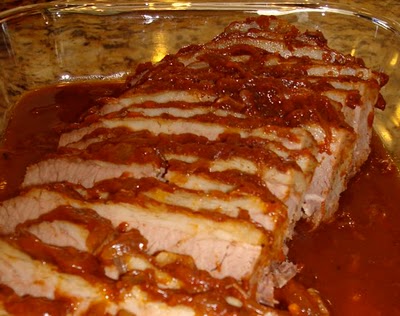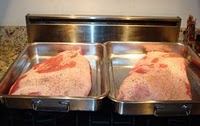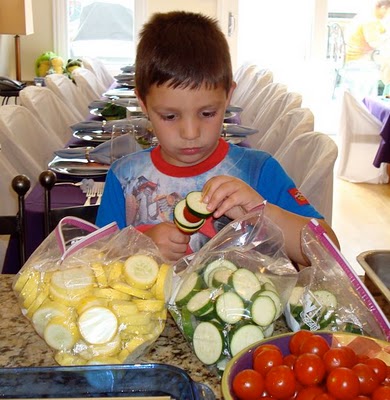What would make the perfect introduction to this year’s collaborative Passover meal? I think Matzoh Balls says it all. Come, have a seat at our Seder Table, and Taste With The Eyes.
First Course

Karen’s Haroset
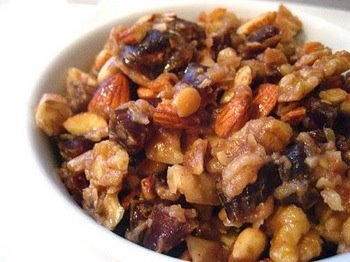
Stacey’s Haroset
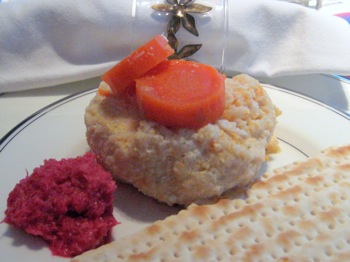
Giz’s Gefilte Fish
Soup
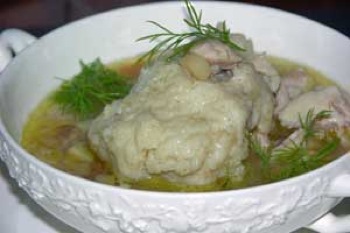
Julia’s Stuffed Matzo Ball Soup
Salad

Zahavah’s Fennel and Pistachio Salad
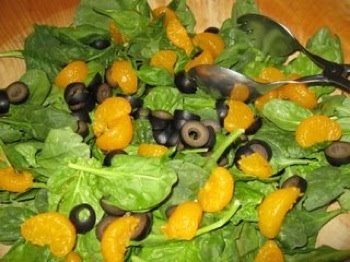
Father Adam’s Spinach Salad
with Mandarin Oranges, Olives, Oakwood Smoked Bacon
Main Course

Zahavah’s Moroccan Meatballs in Saffron Sunset Sauce

Amy’s Baked Tilapia with Lemon Parsley Matzah Crust

Father Adam’s Roasted Leg of Sonoma Lamb

Elra’s Braised Cornish Hen with Coriander
Kirmizi Biber and Preserved Lemon
Sides

Father Adam’s Fresh Asparagus with Garlic and Butter

Lori Lynn’s Roasted Carrots, Parsnips, and Shallots
with Olives and Gremolata
(Brisket in background)
 Father Adam’s Scalloped Russet Potatoes with Cheddar
Father Adam’s Scalloped Russet Potatoes with Cheddar
Dessert
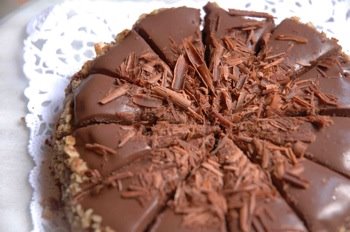
Penny’s Chocolate Cloud Cake

Penny’s Low Fat Cherry Cheesecake
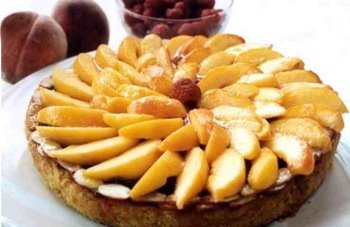
Penny’s Peach Melba Torte
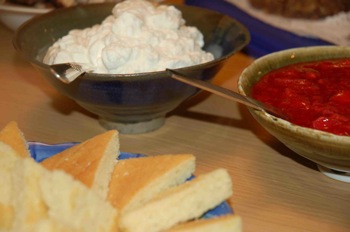
Penny’s Strawberry Shortcake

Penny’s Hazelnut Pear Tort
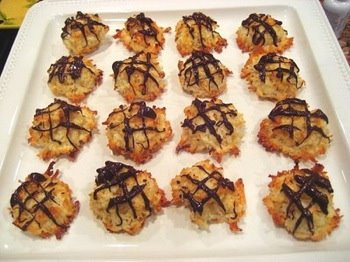
Stacey’s Chocolate Covered Macaroons
Après Passover

Phyllis’ Tempura Gefilte Fish
Contributors (alphabetical):
“As our ancestors ran from Pharaoh’s army on their escape from slavery and their journey out of Egypt and into the promised land, they had no time to wait for their bread to rise. Instead, the bread baked unleavened on their backs in the hot desert sun. This was the first matzah, and we eat it today to remember the sacrifices that our people had to make so that we could be free. The following is an application of matzah that I doubt our ancestors would have ever imagined, much less had the time or ability to prepare on their backs!”
“The Kirmizi Biber will add a little bit of spiciness to the dish.”
Father Adam
“On Holy Thursday, our meal is a little nicer than usual. On that night, we remember Jesus’ Passover Meal (the night before he died) and the night he instituted our Eucharist. We don’t imitate the Seder meal, but we do remember that Jesus was an observant Jew and that he would have celebrated the Passover just as Jews have done throughout the ages. As Roman Catholics, we are proud to look at this as our heritage.”
Giz
“Here’s babba’s recipe that’s been kept under lock and key. We think it’s ‘the best’.”
Julia
“Finally, finally this year, I synthesized all my mistakes and wisdom to create feather light matzo balls. The secret is to make the batter as wet as possible and still hold together when cooked. The water in the batter turns into steam when cooked, pushing against the dough, expanding it to create air pockets. When the matzo balls “set” (i.e. the proteins coagulate and the starches gel), the air bubbles are trapped inside.”
Karen
“I was supposed to prepare Haroset (aka Charoset) for a “Last Supper” reflection in my parish on Maundy Thursday (9 April 2009). The first time I tried making Haroset (using a recipe that I had randomly come across while surfing the web) about 3 -4 years ago, the results weren’t good. This year, I was given a “killer recipe” except that it came without any measurements, indication of proportions, and the directions were simply to mix everything together then refrigerate for 2 days. Panic, panic…what if I got the proportions or sequence wrong etc?”
Lori Lynn
Penny
“We didn’t have anyone who was kosher this year, so I opted to make lowfat dairy desserts, which I made by mixing recipes from my CD, Amazing Passover Desserts, with some of the recipes from Light Jewish Holiday Desserts. We had 4 desserts: Lowfat Strawberry Shortcake – made with Passover Genoise, Strawberry Filling and Lowfat Whipped Cream, Chocolate Cloud Cake with Lowfat Ganache, Lowfat Cherry Cheesecake, and Coconut Macaroons. Each cake was made in miniature so that the portions were small and no one felt stuffed even tasting all of the desserts.”
“But wouldn’t this be a great way to use up leftover gefilte fish once Passover is over?”
Stacey
“Here is my recipe for Haroset. It is more of a Sephardic, Middle Eastern version with different nuts and dried fruits, unlike traditional haroset (also spelled haroseth & charoset). It is absolutely delicious. I always say each year ‘why don’t I make this all year long? It would be a great appetizer, and great on a turkey sandwich!’ But, I never do. It wouldn’t be as special, if I did.”
Zahavah
“On Wednesday, April 8, the morning of the first Passover seder, many Jews will partake in a rare ritual called Birkat HaChamah (”blessing over the sun”) after sunrise…Supposedly every 28 years, the sun is in the exact same position that it was in on the fourth day of creation, and many take advantage of this opportunity to remember creation and bless our Creator. The prayer said roughly translates to, ‘Blessed are you, Eternal our Lord, who makes the work of creation.’ “
As our virtual Seder draws to a close I wish you peace and extend my sincere thank you to all the cooks of this exceptional meal.


























